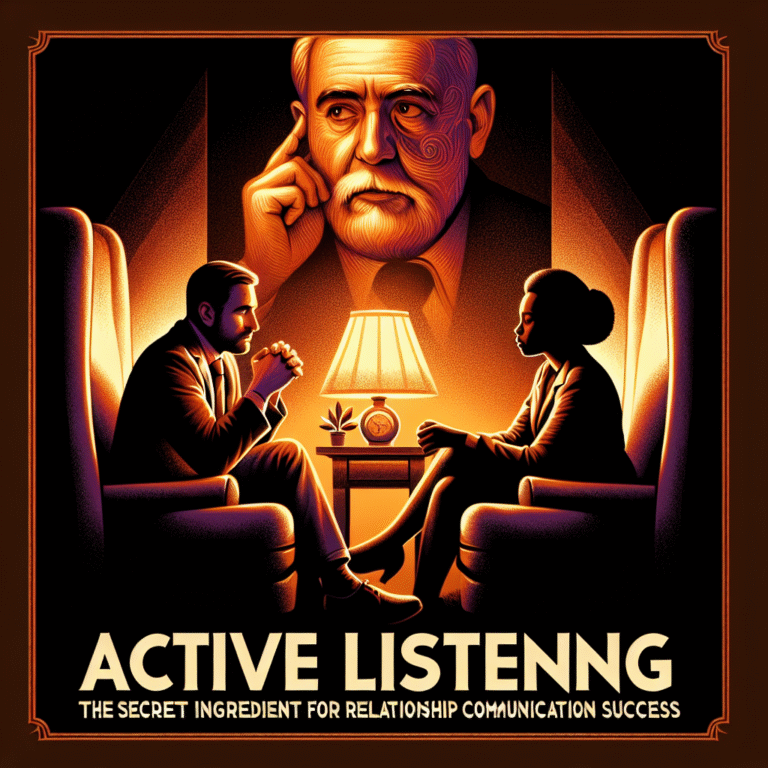
Conquering Fear: Innovative Behavioral Techniques for Phobia Treatment
Introduction
Fear can be a formidable limit on human potential. It’s that gut-wrenching feeling you get before stepping onto a stage, the cold sweat that accompanies a sudden encounter with a spider, or the paralyzing anxiety experienced at the thought of flying. For many, these fears escalate from mere discomfort to crippling phobias, impacting day-to-day life and mental well-being. However, advancements in psychology have paved the way for conquering fear: innovative behavioral techniques for phobia treatment. With cutting-edge methods and therapies, individuals now have more options than ever to face their fears and reclaim their lives.
In this article, we will delve deep into the realm of phobia treatment. We’ll explore various innovative behavioral techniques designed to conquer fear, supported by real-world applications and case studies. By offering you actionable insights and motivational takeaways, we aim to equip you with the knowledge to either embark on your path to recovery or support a loved one in their journey toward a fearless existence.
Understanding Phobias
Before we dive into the techniques, it is essential to understand what phobias are. A phobia is more than just a fear; it’s an intense, irrational fear of a specific object, situation, or activity that leads to significant distress or impairment. This section will examine common types of phobias, how they manifest, and their common triggers.
Common Types of Phobias
| Type of Phobia | Description | Example of Trigger |
|---|---|---|
| Arachnophobia | Fear of spiders | Encountering a spider |
| Acrophobia | Fear of heights | Standing on a high ledge |
| Agoraphobia | Fear of open or crowded spaces | Being in a grocery store |
| Claustrophobia | Fear of confined spaces | Being in an elevator |
| Aviophobia | Fear of flying | Boarding an airplane |
This table highlights just a few of the many phobias that individuals may face. Phobias can result from personal instances, learned behavior, or as a residual effect of traumatic experiences.
The Psychological Basis of Fear
Why Do We Fear?
At its core, fear serves as a survival mechanism, alerting us to potential dangers. However, when this response becomes exaggerated or misaligned with reality, it leads to anxiety and avoidance behavior, thereby causing distress and dysfunction. Understanding the psychological underpinning of fear is crucial for effective treatment.
Notably, fear can often be traced back to:
- Classical Conditioning: Associating a neutral stimulus with a negative experience (e.g., a child bitten by a dog later fearing all dogs).
- Observational Learning: Watching someone else react fearfully to a stimulus can create similar associations.
- Biological Predispositions: Some individuals may have a genetic propensity towards anxiety and fear.
Innovative Behavioral Techniques for Phobia Treatment
As we embark on the journey of conquering fear: innovative behavioral techniques for phobia treatment, this section will explore the leading methodologies that are recognized for their efficacy and innovation.
1. Cognitive Behavioral Therapy (CBT)
Cognitive Behavioral Therapy is one of the most widely used and effective methods for treating phobias. CBT aims to change negative thought patterns that contribute to fear.
- Case Study: A 35-year-old woman with a significant fear of flying underwent CBT, where she learned to reframe her thoughts and began exposure therapy at a therapist’s office. Over 10 sessions, she transitioned from printed materials, videos, and virtual simulations of flying. Eventually, she was able to board a flight without panic.
Analysis: In this case, the integration of cognitive restructuring and gradual exposure allowed the patient to gain control over her fear through a structured process.
2. Exposure Therapy
Exposure therapy involves gradual exposure to the feared object or situation in a controlled manner, making it a particularly powerful strategy for conquering fear: innovative behavioral techniques for phobia treatment.
- Case Study: A man suffering from arachnophobia participated in exposure therapy spanning several weeks, beginning with pictures of spiders, progressing to videos, and finally interacting with a safe, contained spider.
Analysis: Gradual exposure desensitized the patient to the source of fear, demonstrating the key principles of this technique.
3. Virtual Reality Therapy (VRT)
Recently, Virtual Reality Therapy has emerged as a groundbreaking tool for treating phobias. By immersing patients in virtual environments, therapists can create controlled scenarios for exposure.
- Case Study: A patient with a fear of heights experienced VRT at a clinic that simulated high-altitude scenarios. Over several sessions, she was able to navigate virtual skyscrapers and ledges, ultimately translating this experience to real-world scenarios.
Analysis: VRT effectively provides exposure without real-world risks, making it a suitable option for various phobias.
4. Mindfulness and Relaxation Techniques
Mindfulness practices promote an acute awareness of the present moment, which can help patients manage anxiety associated with phobias.
- Case Study: A teenager with social phobia participated in a combined program of mindfulness meditation and CBT, learning to focus on his breathing and anchor himself in the present during anxiety-provoking situations.
Analysis: This case highlights the synergy between mindfulness practices and conventional therapeutic techniques, enhancing the effectiveness of treatment.
5. Acceptance and Commitment Therapy (ACT)
ACT helps individuals accept their feelings and thoughts rather than fighting them. It emphasizes commitment to personal values as a pathway to change.
- Case Study: An adult woman dealing with severe agoraphobia engaged in ACT to accept her fear without trying to eliminate it. She slowly began to venture outside, committing to value-driven behaviors such as attending her children’s school events.
Analysis: This approach illustrates how accepting fear can enable individuals to expand their comfort zones while focusing on life values.
Visualizing Progress: Charts and Data
To better understand progress in phobia treatment, let’s reference a sample chart showcasing the efficacy of various techniques over a six-week treatment period.
| Treatment Type | Week 1 | Week 2 | Week 3 | Week 4 | Week 5 | Week 6 |
|---|---|---|---|---|---|---|
| Cognitive Behavioral Therapy (CBT) | 50% | 60% | 70% | 80% | 85% | 90% |
| Exposure Therapy | 45% | 55% | 60% | 75% | 80% | 85% |
| Virtual Reality Therapy | 40% | 55% | 70% | 80% | 90% | 95% |
| Mindfulness Techniques | 35% | 45% | 55% | 65% | 70% | 75% |
Note: The above figures represent subjective ratings of anxiety and fear in response to triggers.
This chart illustrates a consistent upward trajectory in managing phobia symptoms through various innovative treatment methods.
Conclusion
Conquering fear is a journey that requires courage, persistence, and the right strategies. By tapping into the innovative behavioral techniques for phobia treatment discussed throughout this article, individuals can pave their way toward overcoming their deepest fears. The emotional relatability of case studies coupled with scientifically backed methods provides hope and direction.
If you or someone you know is struggling with a phobia, remember that help is available. Dive into the techniques, explore options, and embrace the journey to a more liberated life. Fear doesn’t have to be formidable; it can be conquered. Start today!
FAQs
1. What are the common symptoms of phobias?
Common symptoms include intense anxiety, sweating, rapid heartbeat, avoidance behavior, and panic attacks when confronted with the fear-inducing object or situation.
2. How long does it typically take to treat a phobia?
The duration of treatment varies, often ranging from several weeks to several months, depending on the severity of the phobia and the techniques used.
3. Are there any medications available for phobia treatment?
Yes, medications such as anti-anxiety drugs or antidepressants can be prescribed in conjunction with therapy to help manage symptoms. However, they are not typically the primary treatment.
4. Is it possible to conquer fear without professional help?
While some individuals can manage their fears through self-help methods, professional guidance is often more effective, especially for severe phobias.
5. Can children experience phobias?
Absolutely, children can develop phobias, and addressing these early through therapeutic techniques can prevent long-term issues.
Through understanding the underlying roots of fear and exploring innovative techniques within this framework, individuals can focus on their resilience and embark on a path toward not just living but thriving without the constraints of phobia. Embolden your spirit, dive deep, and start conquering fear: innovative behavioral techniques for phobia treatment today!

















